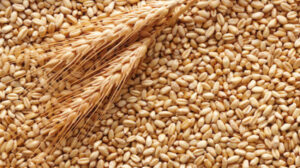
As of August 22, farmers in all regions of Ukraine have already harvested 31.955 million tons of new crops from 6.759 million hectares, the Ministry of Agrarian Policy and Food reported on Friday.
According to the report, more than 28.595 mln tons of grains and 3.36 mln tons of oilseeds have been harvested.
APK-Inform analysts pointed out that only about 46 thou hectares were threshed during the week. The temporary slowdown of the harvesting campaign dynamics can be explained by the fact that the harvesting of two key grain crops (wheat and barley) is almost completed, while the corn threshing has not yet started, the experts noted.
It was specified that 21.74 million tons of wheat were harvested from 4.86 million hectares at a yield of 44.7 c/ha, 5.5 million tons of barley from 1.4 million hectares at a yield of 39.2 c/ha, and 458.5 thousand tons of peas. tons from 207.6 thousand hectares at a yield of 22.1 c/ha, buckwheat – 4.3 thousand tons from 6.2 thousand hectares at a yield of 14.4 c/ha, millet – 11.91 thousand tons from 20.4 hectares at a yield of 17.9 c/ha. Other grains and legumes were harvested in the amount of 882.8 thou tons from 277.3 thou hectares at a yield of 32.4 c/ha.
Ukraine continues to harvest oilseeds. In particular, 3.4 mln tons of rapeseed have been harvested from 1.23 mln hectares with a yield of 27.4 c/ha and 7.2 thou tons of soybeans from 6.6 thou hectares with a yield of 10.9 c/ha. Sunflower was harvested in the amount of 51.7 thou tons from 0.2 thou hectares with a yield of 11.1 c/ha.
Agrarians in a number of regions started digging sugar beets. They harvested 7.2 thou tons of sugar beet from 0.2 thou hectares with a yield of 360 c/ha.

As of August 12, Ukraine exported 4.962 mln tonnes of grains and pulses since the beginning of the 2024-2025 marketing year (MY, July-June), up 58.9% compared to the same period a year earlier, the press service of the Ministry of Agrarian Policy of Ukraine reported, citing data from the State Customs Service.
According to the report, in August, 1.26 million tons were exported, which is 48.6% more than last year. In terms of crops, since the beginning of the current season, Ukraine has exported 2.273 mln tonnes of wheat (1.25 mln tonnes in 2023/24 MY), 739 thsd tonnes of barley (385 thsd tonnes), 0.3 thsd tonnes of rye (0.6 thsd tonnes), and 1.932 mln tonnes of corn (1.481 mln tonnes).
The total export of Ukrainian flour since the beginning of the season as of August 12 is estimated at 6.3 thsd tonnes (in 2023/24 MY – 14.9 thsd tonnes), including 5.7 thsd tonnes of wheat (14.3 thsd tonnes).
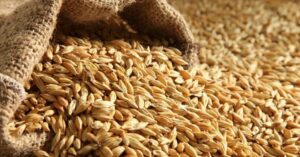
China intends to increase grain imports from Ukraine and will support the smooth operation of logistics channels, assured Foreign Minister of the People’s Republic of China (PRC) Wang Yi at a meeting with Ukrainian Foreign Minister Dmytro Kuleba.
“In recent years, China has been Ukraine’s largest trading partner and largest exporter of agricultural products. The volume of bilateral trade has shown rapid growth in the first half of this year, demonstrating the space and potential for cooperation between the two countries,” the Chinese Foreign Ministry’s press service quoted him as saying.
The Chinese minister emphasized that both sides should fully realize the role of the cooperation mechanism and strengthen practical cooperation in various fields.
“China will continue to expand grain imports from Ukraine and jointly maintain uninterrupted logistics channels and international food security,” Wang Yi assured.
“Ukraine hopes to jointly implement the important consensus reached by the two heads of state, strengthen political mutual trust, intensify cooperation in various fields such as economy, trade and agriculture, and strengthen exchanges between local sister cities,” the Ukrainian Foreign Minister said.
Kuleba assured that Ukraine highly appreciates China’s positive and constructive role in ensuring peace and maintaining international order. Ukraine also attaches great importance to China’s opinion on the political settlement of the Ukrainian crisis.
Ukraine is willing and ready to engage in dialogue and negotiations with Russia. Of course, the negotiations should be reasonable and substantive, aimed at achieving a just and lasting peace,” the Ukrainian minister summarized.
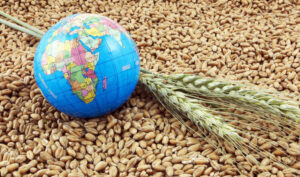
In the 2023-2024 marketing year (MY), Agrotrade exported more than 390 thsd tonnes of grain, up 10% compared to the previous season, the company’s press service reported on its Facebook page.
According to the report, 51.7% of all exports were the company’s own agricultural products, 48.3% were from third-party producers. The main buyers of grain were the EU, North Africa and the Middle East.
“Summarizing the results of the last season, I would like to note that the opening of the Ukrainian grain corridor and its rhythmic operation made our work much easier. It has added predictability, so we can now plan deliveries for a longer period. This allowed us to export more grain than we had forecast. In the new season, we expect that the company’s trade structure will partially return to the pre-war format – sales on EXW and CPT bases will reappear, and forward contracts will increase, as the market situation stabilizes and competition intensifies,” said Andriy But, Director of Foreign Trade Department of Agrotrade Group.
Among the company’s products, corn, wheat, soybeans, and rapeseed were in the highest demand among buyers. In total, in the 2023/24 season, Agrotrade exported grain to 14 countries.
The Agrotrade Group is a vertically integrated holding company with a full agro-industrial cycle (production, processing, storage and trade of agricultural products). It cultivates over 70 thousand hectares of land in Chernihiv, Sumy, Poltava and Kharkiv regions. Its main crops are sunflower, corn, winter wheat, soybeans and rapeseed. It has its own network of elevators with a simultaneous storage capacity of 570 thousand tons.
The group also produces hybrid seeds of corn and sunflower, barley, and winter wheat. In 2014, a seed plant with a capacity of 20 thousand tons of seeds per year was built on the basis of Kolos seed farm (Kharkiv region). In 2018, Agrotrade launched its own brand Agroseeds on the market.
Vsevolod Kozhemiako is the founder and CEO of Agrotrade.
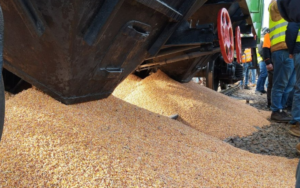
In the marketing year 2023-2024 (MY, June-July), Ukrzaliznytsia JSC (UZ) transported 35.122 million tons of grain cargo, the best figure in the last four years, said Valery Tkachev, Deputy Director of Transportation Technology and Commercial Work Department of UZ, at a meeting with agricultural market participants on Thursday.
According to him, in June, 3.48 million tons of grain were transported by rail in all directions, a third more than in the same month of 2023.
In the first six months of this year, UZ transported 21.85 million tons of grain, which is 30% more than in the same period last year.
At the same time, 2.558 million tons of grain were transported in export traffic in June, and 18.731 million tons in six months, which is 43% more than a year earlier.
Export volumes of oil and oilcake and meals also increased. Thus, in January-June 2014, 954 thousand tons of vegetable oil were transported by rail, which is 30% more than last year. During the same period, the transportation of oilcake and meal increased by 19% to 1.41 million tons, Tkachev summarized.
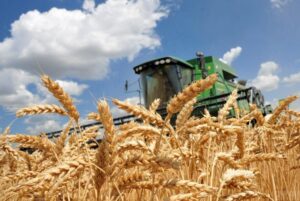
Agrarians in sixteen regions of Ukraine have started harvesting early grains and legumes and have threshed 721.4 thousand tons of grain from 209.8 thousand hectares, the press service of the Ministry of Agrarian Policy and Food reported on Friday.
According to the press service, 36.2 thousand tons of wheat were harvested from 36.2 thousand hectares with a yield of 31.2 c/ha, 545.7 thousand tons of barley from 145.8 thousand hectares with a yield of 37.4 c/ha, 56.3 thousand tons of peas from 25.9 thousand hectares with a yield of 21.7 c/ha.
In addition, seven regions have started harvesting rapeseed. They harvested 63.6 thou tons of rapeseed from 31.7 thou hectares.
At the same time, agrarians in Odesa region are leading in terms of threshing grain harvested from 85.7 thou hectares. Agrarians in Ternopil region are the leaders in terms of yield – 78.1 c/ha.